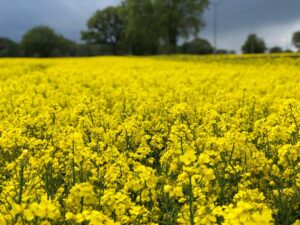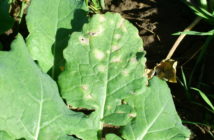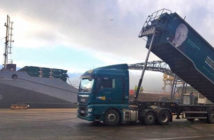Following Defra releasing full 2024 UK area, yield and production data, the AHDB has finalised the results of its Early Bird Survey (EBS), including publishing regional information.
The headline forecasts for wheat, barley, oats and oilseed rape are little changed from November’s provisional results.
The intentions show a fall in winter cropping for harvest 2025. At a national level, wheat, winter barley and oilseed rape areas are all set to fall this harvest, with increases intended to the areas of spring wheat, spring barley and spring oats.
The AHDB stress most of the data was collected by 11th November, though results were received up to 15th of the month.
While typically, adjustments are made to the final EBS forecasts to allow for any weighting differences (crop mix or regions) between the survey area and official data, none are applied this year. The large changes in cropped areas and uncropped land for harvest 2024, plus another challenging autumn planting period this year means there is greater uncertainty over some figures. Against this backdrop, unadjusted figures are presented to better show the cropping intentions for the main crops in arable rotations for harvest 2025.
Wheat
The overall wheat area is forecast to rise by 5%, all within the winter crop, after last autumn’s challenging weather sharply reduced the area. Spring wheat is expected to nearly halve after last year’s rise due to the wet conditions, though the crop accounts for a very small proportion of the total wheat area.
However, at 1,614 Kha, the projected area remains below the 2019 – 2023 average of 1,705 Kha.
Rises are forecast across all regions in England, plus for Northern Ireland and Wales, amid highly variable weather conditions again this autumn. Delays harvesting late-planted crops for harvest 2024 also caused bottlenecks for farmers, with harvesting overlapping into drilling windows.
The largest rises are forecast across northern England, and in the East Midlands (+14%) where some of the steepest falls in area were recorded last season. There were also periods of better planting conditions in northern England this autumn, helping crops here to establish well.
However, there are limited recoveries in area for the South East (+1%), West Midlands (+1%) and Eastern England (+3%). No recovery is projected for the South West.
In contrast, Scotland is expected to see a further 3% fall in wheat plantings, to 95 Kha, which would be the smallest area since 2020.
Barley
The total barley area is forecast to fall 9% year-on-year to 1,083 Kha with declines in both winter and spring sown crops. The forecasted total winter barley area is down 1% on the year at 381 Kha, while the area of spring barley is forecast to fall 13% from harvest 2024 to 702 Kha.
There is notable variation in winter barley areas across England, with the largest rises in the West Midlands and North West. The largest falls are recorded for Eastern England, South East and North East.
Meanwhile, the Scottish winter barley area is forecast up slightly (+3%). The area in Wales and Northern Ireland combined is expected to be broadly stable.
Following the large rises in 2024 due to the extreme weather conditions, the UK spring barley area is expected to drop back for harvest 2025. However, at 702 Kha, the total area would still be above the levels recorded in 2022 and 2023.
All regions of England are forecast to reduce their spring barley areas for harvest 2025. The largest percentage declines are forecast in the West Midlands (-43%), Yorkshire & The Humber (-37%), East Midlands (-33%) and North West (-33%). The smallest decline is expected in the South West (less than 1%).
In Scotland, the area of spring barley is anticipated to rise further, by around 4Kha, versus harvest 2024. If the intention is realised, this would mean the largest Scottish spring barley area since 2014 (274 Kha).
Notable falls in the spring barley area are also expected for Wales and Northern Ireland.
Oats
The UK oat area for harvest 2025 is estimated to rise a further 3% from harvest 2024 to 188 Kha. Within the total, there is a slightly greater increase in winter oats, which is expected to account for a slightly larger proportion of the national area. Changes in crop rotations due to the unusual weather conditions plus, the comparatively strong yields and quality of oats 2024, seem likely to be factors.
Smaller oat areas are intended in northern England, where the largest recoveries in wheat plantings are expected, plus the West Midlands where the spring barley area is expected to fall sharply. Conversely rises in oat areas are expected across southern and eastern areas of England.
In Scotland, the intended oat area is up 12% year-on-year to 31 Kha. If realised, this would be the largest since 2021.
Oilseed rape
 After another challenging year for OSR, the area again is predicted to fall a further 17% for harvest 2025. While OSR prices are now higher than at this time last year, most of the rises didn’t take place until after planting was completed. At 244 Kha the area estimate for harvest 2025 is slightly higher than the provisional estimate from this survey but would still be the smallest in 42 years.
After another challenging year for OSR, the area again is predicted to fall a further 17% for harvest 2025. While OSR prices are now higher than at this time last year, most of the rises didn’t take place until after planting was completed. At 244 Kha the area estimate for harvest 2025 is slightly higher than the provisional estimate from this survey but would still be the smallest in 42 years.
Markedly lower areas of OSR are expected in all areas of England, with the sharpest falls estimated for the North West (-47%), South East (-25%) and Yorkshire & The Humber (-24%). The Eastern region records the smallest fall in the area of OSR (-9%), followed by the East Midlands (-10%).
A sharp (-25%) fall is also recorded for Scotland to an estimated 27 Kha.
Together Wales and Northern alone record an expected rise in OSR area, though the overall area remains small compared the rest of the UK.
Other results
Historically, when the oilseed rape area falls, pulses tend to rise to fill the break crop gap. However, this does not appear to be the case this season, with pulses falling approximately 7% from last harvest.
Other combinable cereals are down 8%. Crops of smaller area had a lesser area coverage in the survey, so these results will be subject to greater uncertainty.
The last ‘catch-all’ category ‘other crops on arable land’ falls 3% and includes sugar beet, potatoes, vegetables and other crops that appear in the arable farm rotation such as temporary grass and maize. This survey is focussed on the arable farm rotation rather than all arable land which would include grass and forage rotations. For this reason, an estimate of the total area of these crops that appear in the arable rotation are used in this figure.
The survey also points to a further rise (+51%) in uncropped arable land from 2024’s already high level. However, it is unclear if this reflects decisions still to be made or land intended for agri-environmental schemes in England, particularly with the largest rises reported for Northern England. Data from Defra shows that between July and October only a further 20 Kha were entered into Sustainable Farming Incentive (SFI) options that take land (grassland or arable) out of production across all farm types. Defra’s next figures on SFI uptake are due in February and will need to be monitored.




